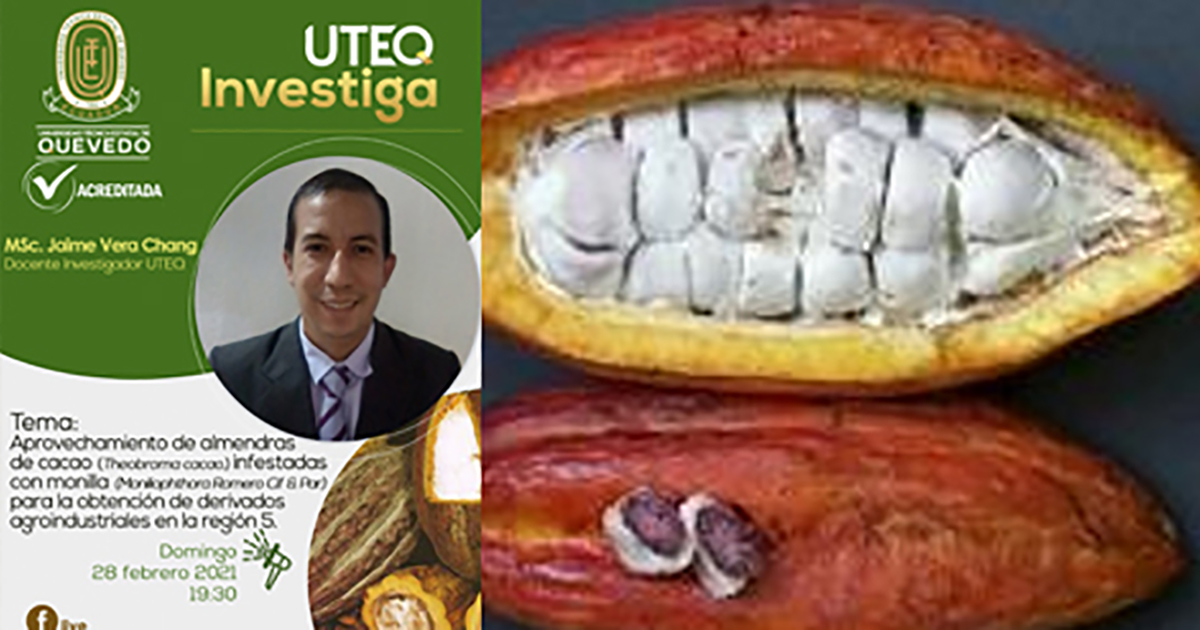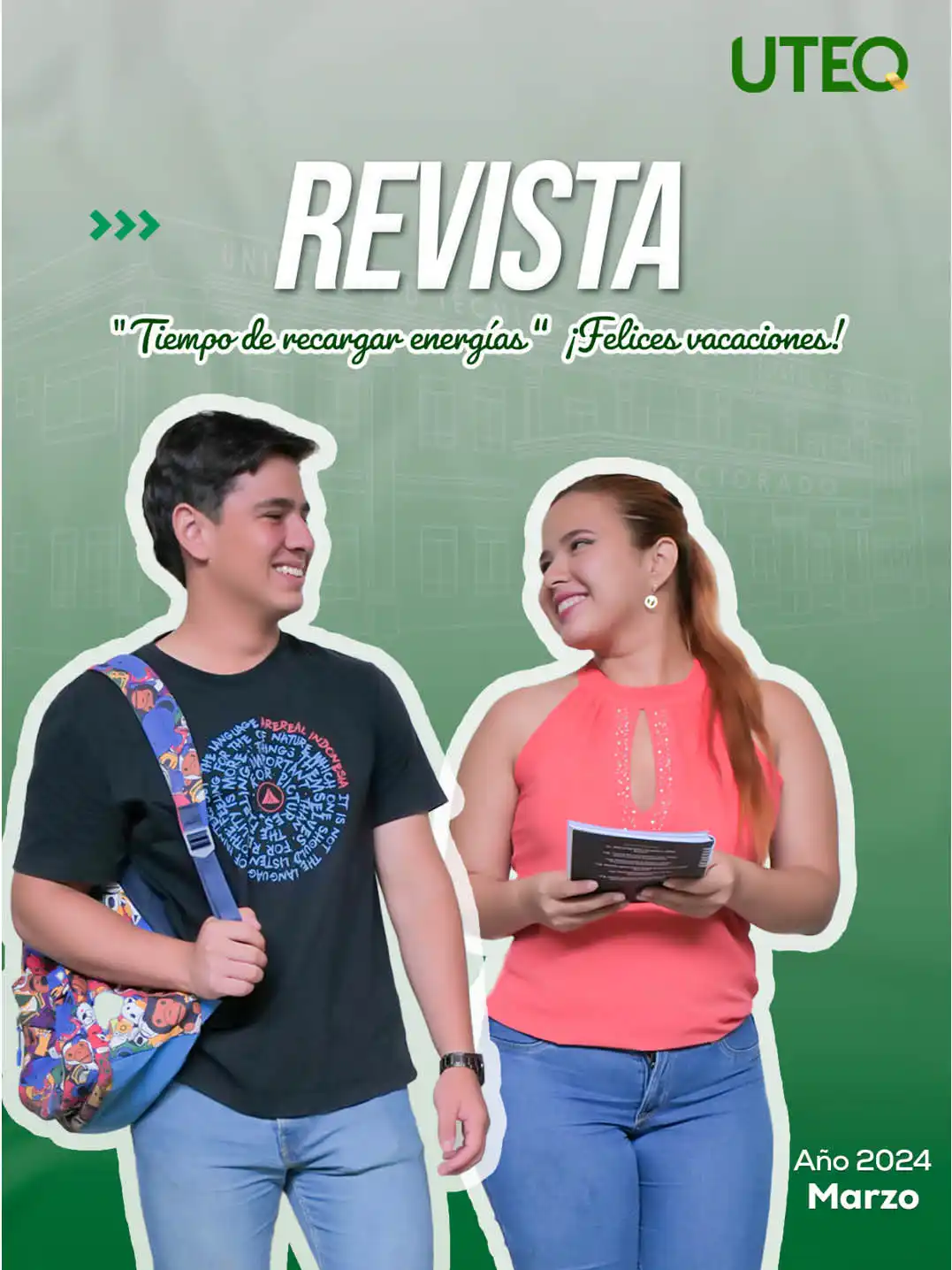Use of cocoa beans infested with monilla to obtain agro-industrial derivatives
Published on 28 from February from 2021

Ecuador is known for producing fine and aromatic cocoa, which accounts for 6 % of world production.
Cocoa farming has always been a source of livelihood for 100,000 farming families on the Ecuadorian coast.
A serious threat to cocoa producers is the phytosanitary disease, monilla (Moniliophthora rorer Cif & Par), which affects 50-80 % of the yield, especially in national cocoa, causing significant profitability and economic losses for the producer. Nowadays, there is no method to combat it, and this background has given rise to the research carried out by MSc. Jaime Vera Chang, research professor at the UTEQ.
The objective of the study is to take advantage of the cobs with monilla infestation in the area of the province of Los Ríos, which represents 500 thousand tons (approximately) of waste, reaching an agro-exporting capacity of the country of 20% on a global scale to process and obtain agro-industrial derivatives of cocoa such as: cocoa liquor, butter, powder and beverages used for the food industry.
Where was the research carried out?
The research was carried out at the experimental farm "La Represa" owned by the Technical State University of Quevedo and the agro-industrial laboratory of the Equinoctial Technological University of Santo Domingo de los Tsáchilas.
What methodology did you use?
The objective was to extract cocoa paste from five experimental clones susceptible to monilla with the addition of breadfruit to obtain chocolate cream. Tukey's multiple range test (p?0.05) was used to determine between treatments, with a completely randomised design of five treatments and four replicates. The bromatological variables studied were (humidity, dry matter, ash, organic matter, ethereal extract, total nitrogen, viscosity, energy and brix degrees), the sensory variables were: taste, colour, flavour, odour and texture and were evaluated using a four-point scale and economic variables (net profit, B/C ratio and profitability).
Based on the statistical analysis, it was determined that T2 (CCAT-4675) is the one that stands out for its low moisture content (0.54%), ash (1.14%), ethereal extract (27.63%), non-nitrogenous elements (65.45%) and crude protein (5.78%). In sensory attributes, the non-parametric Kruskal-Wallis test was applied, indicating that T2 (CCAT-4675) presented the best sensory profile. With regard to the economic analysis, it was indicated that the benefit/cost ratio corresponds to USD$ 1.20, i.e. for every dollar invested, USD$ 0.20 profit is generated, with a profitability of 20% on the chocolate cream.
Is there any danger from the toxins present in the infested cobs?
For this process, enzymes were used during the fermentation process, biochemical changes were evidenced, in addition to the application of thermal barriers during roasting, notoriously decreasing any risk to the consumer.
What are the findings?
- A chocolate cream was obtained from five experimental cocoa clones, however, the treatment that meets all the indicated parameters is T2 with low moisture content (0.54%), ash (1.14%), ether extract (27.63%), crude protein (5.78%), energy (533.63 kcal/100g), viscosity (2257.50 centipoise) and brix degrees (79.05).
- It was determined that the sensory analysis of the chocolate cream, the treatment that meets the ideal characteristics in taste, colour, flavour, odour and texture is T2, where taste/sweetness, colour/coffee, chocolate taste and odour and a thick/texture prevailed.
- According to the economic valuation analysis of the applied technology, it is concluded that a low profitability of 20% was obtained with a net benefit of $6.58 dollars, with a benefit/cost ratio of $1.20 dollars, i.e. for every dollar invested, 0.20 dollars of profit is generated in the chocolate cream.

